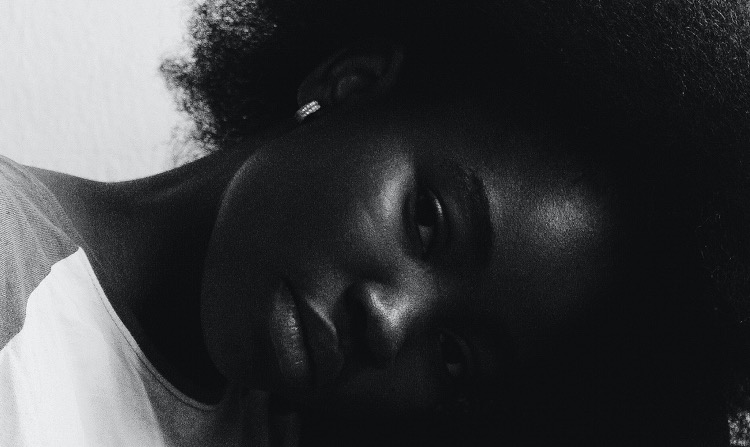
For those who have never struggled with depression, any suggestion that it can cause so much physical and emotional turmoil might seem quite hard to grasp. Unbeknownst to you, depression might have once knocked on your door; you might have called it by another name… perhaps ‘the blues that just would not go away’ or ‘feeling under the weather or in the dumps’ or better still ‘the not-so-pleasant side/twin’ that you hid beneath a constant mask of smiles and courage? Or maybe you have been touched by the life of another briefly – or constantly – battling with depression?
Depression symptoms
We all struggle with feelings of sadness, inadequacy or irritability from time to time; what makes this a normal phase in life as opposed to a state of depression is the fact that we tend to bounce right back to our old selves within a short period of time and seek our next mountain-top experience. Depressed individuals are unable to. Without help or treatment, they can wander around, trapped in morose for years and continue to sink deeper into a bleak, dark world. For many, each day is plagued with one or more of the following symptoms:
| What to look out for: | |
| Feelings of helplessness and hopelessness | A bleak outlook—nothing will ever get better and there is nothing you can do to improve your situation. |
| Loss of interest in daily activities | No interest in or ability to enjoy former hobbies, pastimes, social activities, or sex. |
| Appetite or weight changes | Significant weight loss or weight gain—a change of more than 5% of body weight in a month. |
| Sleep changes | Either insomnia or oversleeping (also known as hypersomnia). |
| Psychomotor agitation or retardation | Either feeling “keyed up” and restless or sluggish and physically slowed down. |
| Loss of energy | Feeling fatigued and physically drained. Even small tasks are exhausting or take longer. |
| Self-loathing | Strong feelings of worthlessness or guilt. Harsh criticism of perceived faults and mistakes. |
| Concentration problems | Trouble focusing, making decisions, or remembering things. |
| Irritability | Easily annoyed or frustrated. Lashing out in anger or snapping at others. |
| Aches and pains | New or worse physical symptoms, including headaches, backaches, diarrhea or constipation, abdominal pain, and aching joints. |
It is easy to quickly skip through the table above without getting a first hand feel of the suffering behind it. To help put flesh and skin on the subject at hand, take a minute to read this beautiful, yet sad narration by a person struggling with depression(for full poem see link in reference section)
Depression in Women
Depression generally occurs twice more often in women than in men which partly due to do biological, life cycle, hormonal and psychological factors unique to women4. Although the criteria for diagnosing depression is the same for both sexes, women tend to experience more guilt, anxiety, increased appetite – sometimes accompanied by eating disorders ,weight gain, and increased sleep. Some women are prone to menstrual related depression (PMS or PMDD), postpartum depression (discussed briefly later), stress-related depression (e.g. juggling career and home, changes during menopause or abuse). Risk factors for depression in women include:
- Family history of mood disorders
- Personal past history of mood disorders in early reproductive years
- Loss of a parent before the age of 10
- Childhood history of physical or sexual abuse
- Use of an oral contraceptive, especially one with a high progesterone content
- Use of gonadotropin stimulants as part of infertility treatment
- Persistent psychosocial stressors (e.g., loss of job)
- Loss of social support system or the threat of such a loss
Types of Depressive Disorders
There are several types of depressive disorders which generally share common symptoms like those outlined in Table 1 above. These include major depressive disorder, dysthymic disorder, psychotic depression, postpartum depression, seasonal affective disorder and bipolar disorder. Some of these forms of depression are discussed below:
a) Major Depressive disorder
Sometimes occurs due to a single traumatic life event or several life crises over a person’s lifetime, which affects one’s ability to enjoy the things they once used to, such as eating, socializing, sleeping or working. One could have a single episode of major depression and not have it occur again once it has passed. Others will have it recur several times and might require long term treatment to manage their mood.
b) Postpartum Depression
Generally as high as 85% of women will experience some type of transient, mild mood disorder following delivery of a baby3. Researchers believe that it might partly have to do with a fast drop in hormones responsible for maintaining pregnancy once delivery has occurred. This ‘postpartum blues’ typical peak four to five days after delivery and usually ends within two weeks. They consist of mood swings, increased irritability, anxiety and tearfulness but none of these symptoms affect a mother’s ability to care for her baby.
However, in 10-15% (~400,000) of women each year in the U.S, the mood swings can last beyond 2 weeks and can significantly affect their ability to function or care for their child3. This is called postpartum depression, with symptoms very similar to that of major depressive disorder. Mothers lose interest in their babies, are very anxious, fatigued, have decreased appetite and may entertain thoughts of harming themselves or the child. Given the high prevalence and resolution of symptoms with treatment, doctors today place high emphasis on screening women for depression during pregnancy and the postpartum period. Risk factors for developing postpartum depression include:
-Inadequate social or family support (e.g. marital problems, teenage mother)
-Significant or recent negative life experience
-Prior history of depression or a family history of a mood disorder
-Prior history of postpartum depression or psychosis (risk of recurrence is 90%)
c) Seasonal Affective Disorder (SAD)
SAD is a type of depressive mood disorder that seems to occur only during the winter months, which explains its other name ‘winter depression.’ Scientists have found a strong association between the less natural sunlight available and shorter days in winter with increased sleepiness, little energy, general disinterest in daily activities and a craving for sweets and starchy foods. Between 6-35% of people with SAD require hospitalization for treatment of their depression5. Symptoms, regardless of their intensity, clear up once the spring season rolls in with increased duration and amounts of sunlight.
Treating depression
Similar to any other disease, early detection and treatment of depression are very important and can significantly influence the duration of symptoms. Also, since other illnesses, medicines or viral infections can cause depression-like symptoms, talking to your doctor can aid in diagnosing and treatment of these conditions. Once other causes have been ruled out through tests and general physical exams, your doctor might refer you to a psychiatrist or mental health expert for evaluation.
Contrary to widespread believe, seeing a psychiatrist does not mean one is ‘crazy’; it is about time we rid our society of such damaging notions. Mental illnesses of any kind should be treated with the same understanding and attention as illnesses that affect other parts of our bodies. Just as a cardiologist is a doctor for the heart, a psychiatrist’s specialization lies with the mind.
Either your doctor or psychiatrist will determine which treatment plan works best for you after considering your illness, comorbid conditions, social setting, family history and daily activities. Current treatments for depression include use of antidepressant drugs, psychotherapy or a combination of both.
Psychotherapy as treatment for depression
Psychotherapy is a very interesting process that could take any of these forms:
a) Cognitive-Behavioral Therapy
This seeks to treat depression and prevent its recurrence by helping patients identify, test, and reshape negative perceptions about themselves, the world, and future. It also encourages them to develop new and more flexible cognitive patterns alternative to depressive ways of viewing life experiences and rehearsing new cognitive and behavioral responses.
b) Interpersonal Psychotherapy
Psychologists who use this treatment option believe that depression is a disorder that ‘happens’ to a patient, thus, taking away any blame for the disease from the patient or people within the patient’s social circle. Interpersonal psychotherapy seeks to help patients in these areas of lives:
>reaction to grief causing events such as losses or bereavement
>resolving disputes and conflicts with significant others dealing and navigating smoothly with life transitions and changes that might influence a person’s self-esteem)
c) Behavioral Therapies
As the name suggests, it involves treatment of depression by teaching self-control, social skills, and multimodal therapies. A couple of the techniques used are:
- Self-monitoring and self-evaluation of mood and activity
- Scheduled increases in levels of general, social, and pleasurable activity and behavioral productivity
- Decrease in or management of aversive event
- Relaxation and mental imagery training to encourage active stress management by development of positive coping and mastery images
I am once again reminded of a famous antidepressant television ad that uses the phrase ‘depression hurts.’ It gives us a window into the lives of everyday people trapped in a physically and mentally draining existence in which they suffer silently– unable to play with their child or respond to their significant other; having lost any interest in the things which once used to excite them. The good news is that there is indeed hope for each person and that one no longer needs to suffer alone. If you or someone you know has several of the symptoms of depression, think about talking to your doctor today. It is time we kissed depression goodbye and walked into the warm sunshine of a new dawn in our lives.
References:
The World Health Organization. The World Health Report 2004: Changing History, Annex Table 3: Burden of disease in DALYs by cause, sex, and mortality stratum in WHO regions, estimates for 2002. Geneva: WHO, 2004.
Kessler RC, Chiu WT, Demler O, Walters EE. Prevalence, severity, and comorbidity of twelve-month DSM-IV disorders in the National Comorbidity Survey Replication (NCS-R). Archives of General Psychiatry, 2005 Jun;62(6):617-27.
Nonacs, R. Postpartum Depression. eMedicine. 2007 Dec http://www.emedicine.com/med/topic3408.htm
National Institute of Mental Health. Depression- What Every Woman Should Know
Modell, Jack; Rosenthal NE, Harriett AE, Krishen A, Asgharian A, Foster VJ, Metz A, Rockett CB, Wightman DS (2005). “Seasonal affective disorder and its prevention by anticipatory treatment with bupropion XL Biological Psychiatry” 58 (8): 658-667
Erbaugh, S.E. The Attributes of Psychotherapy for Depression.







